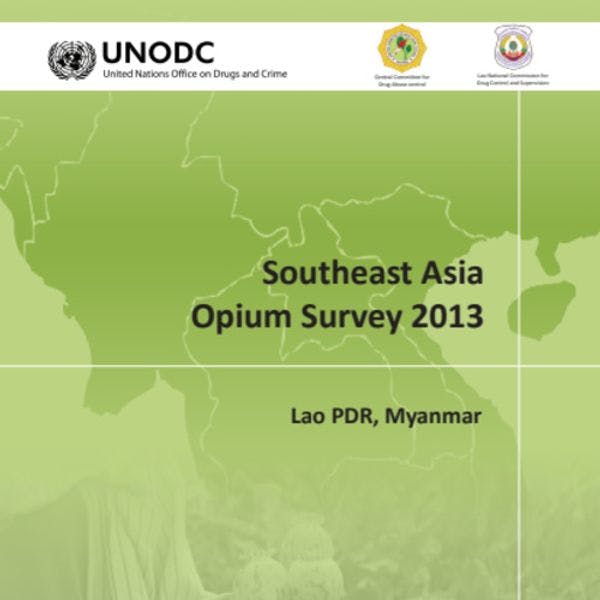Southeast Asia opium survey 2013
This year’s Southeast Asia Opium Survey shows that despite eradication efforts, opium poppy cultivation in the region continues to increase. Poppy cultivation in Myanmar rose 13% from the previous year to 57,800 hectares, more than doubling since 2006. In Lao cultivation levelled off but remains a concern.
The combination of an increase in both cultivation and yield of opium poppy in Myanmar in 2013 resulted in a rise in opium production of some 26% in comparison to 2012. The best estimate for 2013 opium production in Myanmar alone is some 870 tonnes, the highest since assessments by UNODC and the Government began. Heroin seizures in East and Southeast Asia in 2012 were just over nine tonnes, compared to 6.5 tonnes in 2010, while there were 2.7 tonnes of opium seized in 2012 compared to two tonnes in 2010.
Surveys of farmers in poppy-growing villages, indicate that the money made from poppy cultivation remains an essential part of family income. Villagers threatened with food insecurity and poverty need sustainable alternatives, or they will continue out of desperation to turn to growing this cash crop. Another troubling trend that must be addressed is the rise in demand in nearby markets, which may be fuelling the resurgence in cultivation and production.
In Myanmar and Lao PDR, the use of opium, heroin and synthetic drugs – another growing threat in the region –, remains high. Moreover, the number of registered heroin and synthetic drug users in China has been going up since 2007.
Keep up-to-date with drug policy developments by subscribing to the IDPC Monthly Alert.
Downloads
Topics
Regions
Related Profiles
- United Nations Office on Drugs and Crime (UNODC)
